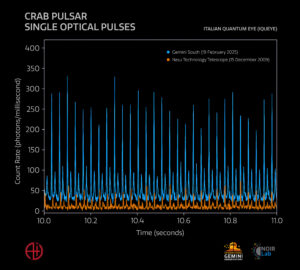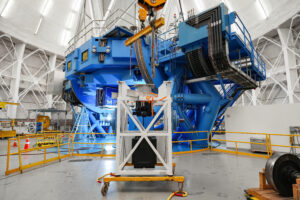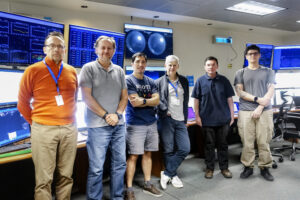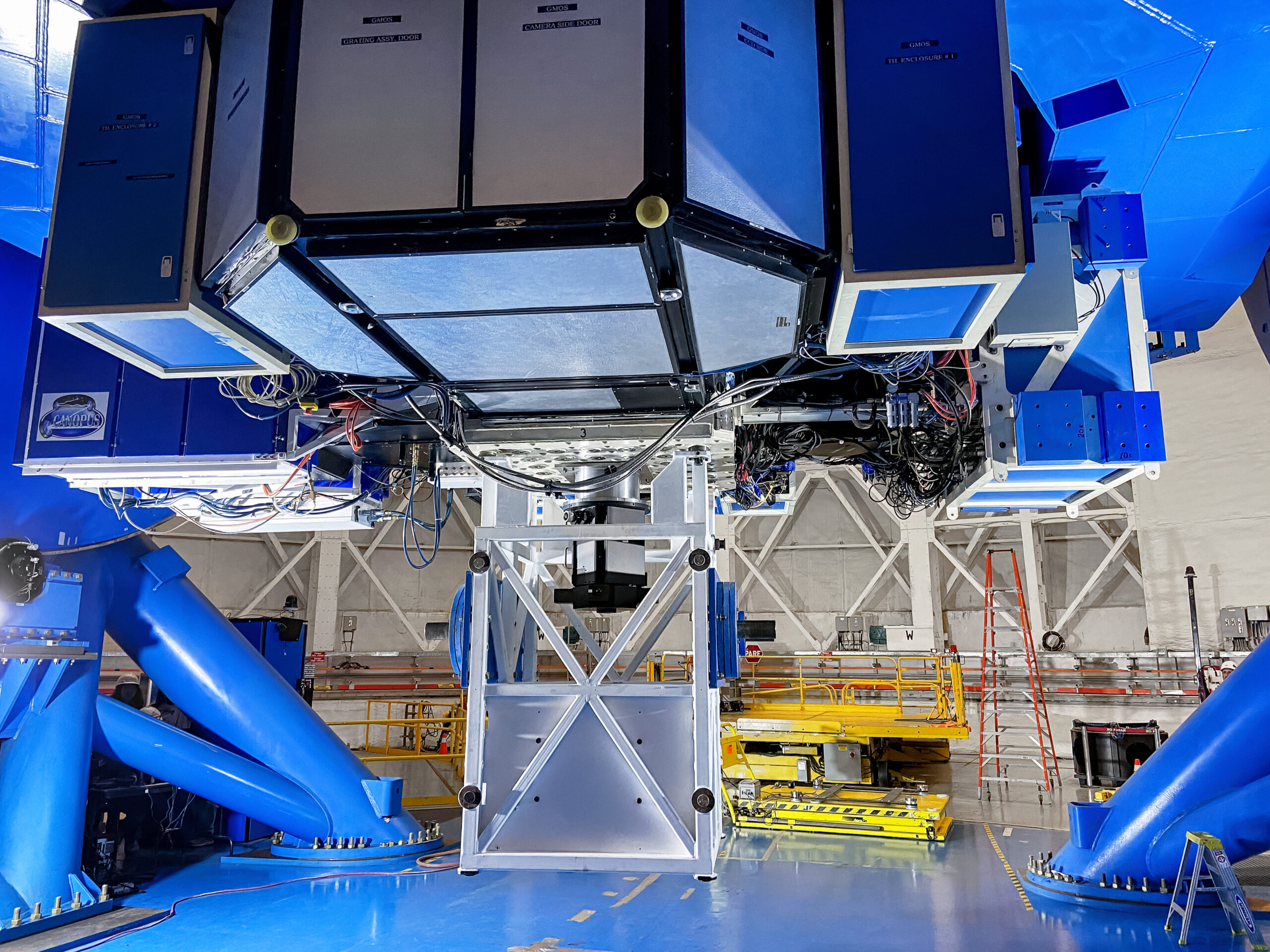
New Chilean-led photometer sees its first light at Gemini South Observatory
IQUEYE, a new visiting instrument located at the Gemini South Observatory, has a revolutionary technology capable of detecting a single photon at a time, opening new possibilities for the study of astronomical phenomena. The project is led by Chilean astronomer and CATA Associate Researcher Tomás Cassanelli.
A new photometer in Chile called IQUEYE (Italian Quantum Eye) has been positioned at the Gemini South Observatory, located in the commune of Vicuña, Coquimbo Region. This visiting instrument, led by Prof. Tomás Cassanelli, Associate Researcher at the Center for Astrophysics and Related Technologies (CATA) and astronomer at the University of Chile, together with Giampiero Naletto, from the Università di Padova (Italy) and Luca Zampieri (INAF), promises excellent potential to observe time-varying astronomical objects that vary in time at high speed, such as pulsars, pulsars and magnetars.
These tools make it possible to observe distant objects in the Universe by collecting the flux of photons (the fundamental particle of light) emitted by the objects. The difference between IQUEYE and its peers is that IQUEYE detects only one photon at a time. As they flow, each is individually labeled with its arrival time. This method allows the instrument to make precise time measurements with an accuracy of up to 0.5 nanoseconds.
The project has been able to see its first light on Gemini South by observing the Crab Pulsar, which is the ideal target as it is one of the brightest and best documented sources of (microsecond) pulsars. While other telescopes have observed this spectrum at various wavelengths, this is the first time it has been observed at such a high temporal resolution and at a higher level of detail and sensitivity. However, Cassanelli stresses that this is not the only thing he will be focusing on.
“Our idea is to validate the instrument with this science, but we are looking to focus it on another area called fast radio bursts (FRBs). These are pulses of energies higher than pulsars, millisecond bursts, and extragalactic, which have only been seen in radio waves. With IQUEYE we could potentially be able to see these FRB pulse emissions, which would give us many more clues to their astrophysical origin, better understand the propagation and interaction of FRB radiation with the intergalactic medium and possible new metrics for cosmology, since they are one of the great questions of the century and with this project, we will study them in the future,” said the CATA researcher.
The origin of the IQUEYE project on Gemini South dates back to 2022, where until then the instrument had only been used on telescopes no larger than three meters in diameter. The great advantage is its large aperture, which considerably increases the photon flux and increases the final gain of this tool.
However, according to Cassanelli “there was a lot of work over the years to validate the instrument both in its scientific capabilities and technical adaptation (mechanics, optics, networking, etc).” In early 2024, the instrument was finally approved by an internal Gemini panel to be installed and an international panel of astronomers to validate scientific observations, with the goal of observing 50 hours of data. The initiative has been funded by the Center for Astrophysics and Related Technologies (CATA) and the Università di Padova.
The project was also developed and installed with the participation of Chileans Pascual Marcone, an Electrical Engineering student, and Juan Riquelme, Mechanical Engineer at CATA, who also works at the Millimeter Wave Laboratory of the University of Chile, with the collaboration of countries such as Argentina, Canada and the United States. The astronomer also highlights that the first light of IQUEYE has been produced in our country “will help us to form a paradigm shift in Chile where the development of instrumentation and science is possible from our institutions”, he emphasized.
Next steps and stay in Chile
For now, IQUEYE will observe in the visible spectrum, where its first-class temporal precision will provide complementary data to other telescopes observing the same time-domain events at other wavelengths of radiation. These include the ability to report on the origin of the fast radio bursts (FRBs) mentioned above. Thus, astronomers will be able, for the first time at deep sensitivity levels, to compare what a FRB looks like at radio wavelengths versus visible light at extremely precise moments in time.
In parallel, Cassanelli comments that “now comes a more scientific/astronomical work, to analyze these 50 hours of galactic pulsar data and validate our temporal precision, of the order of nanoseconds, and show that with this photometer we are reaching the expected results and even structures and new science in optics never done before with pulsars”.
Once these results are published, the team will focus on improving the setup and planning a new future installation of IQUEYE on Gemini South, which is already being planned for the next semester of 2026 and will be open to the entire community. In this line, the CATA researcher confirms that they contemplate extending their stay for several consecutive semesters, with active participation of the Chilean team in the installation, observation and data reduction.
Recent news
-
 Publicado el: 15/11/2025Leonids meteor shower 2025: What are they, when will they be visible from Chile, and what can we learn from them?
Publicado el: 15/11/2025Leonids meteor shower 2025: What are they, when will they be visible from Chile, and what can we learn from them? -
 Publicado el: 13/11/2025CATA researcher strengthens international ties during visit to the Center for Astrobiology in Madrid
Publicado el: 13/11/2025CATA researcher strengthens international ties during visit to the Center for Astrobiology in Madrid -
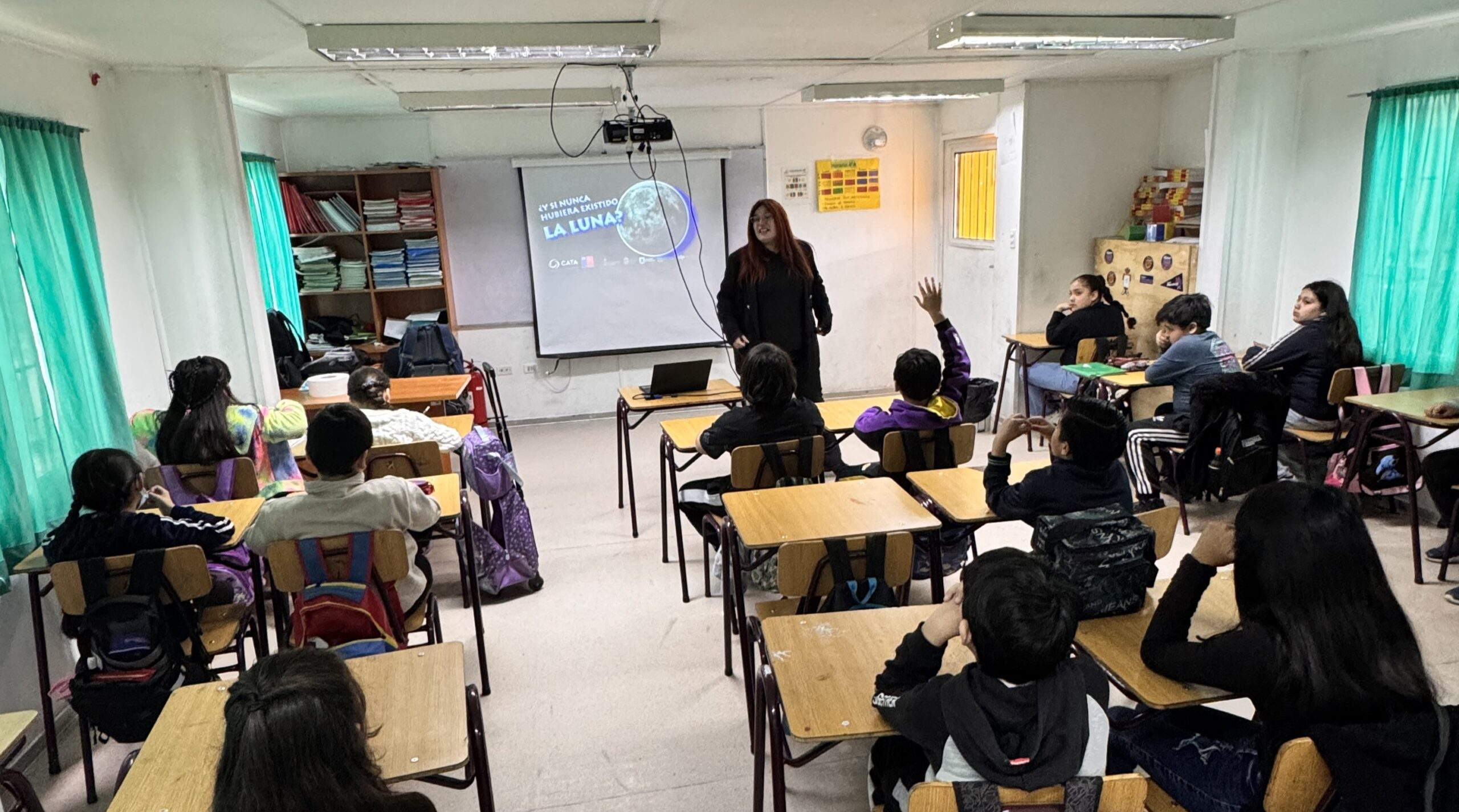 Publicado el: 12/11/2025Fourth graders learned what would happen if the Moon did not exist
Publicado el: 12/11/2025Fourth graders learned what would happen if the Moon did not exist -
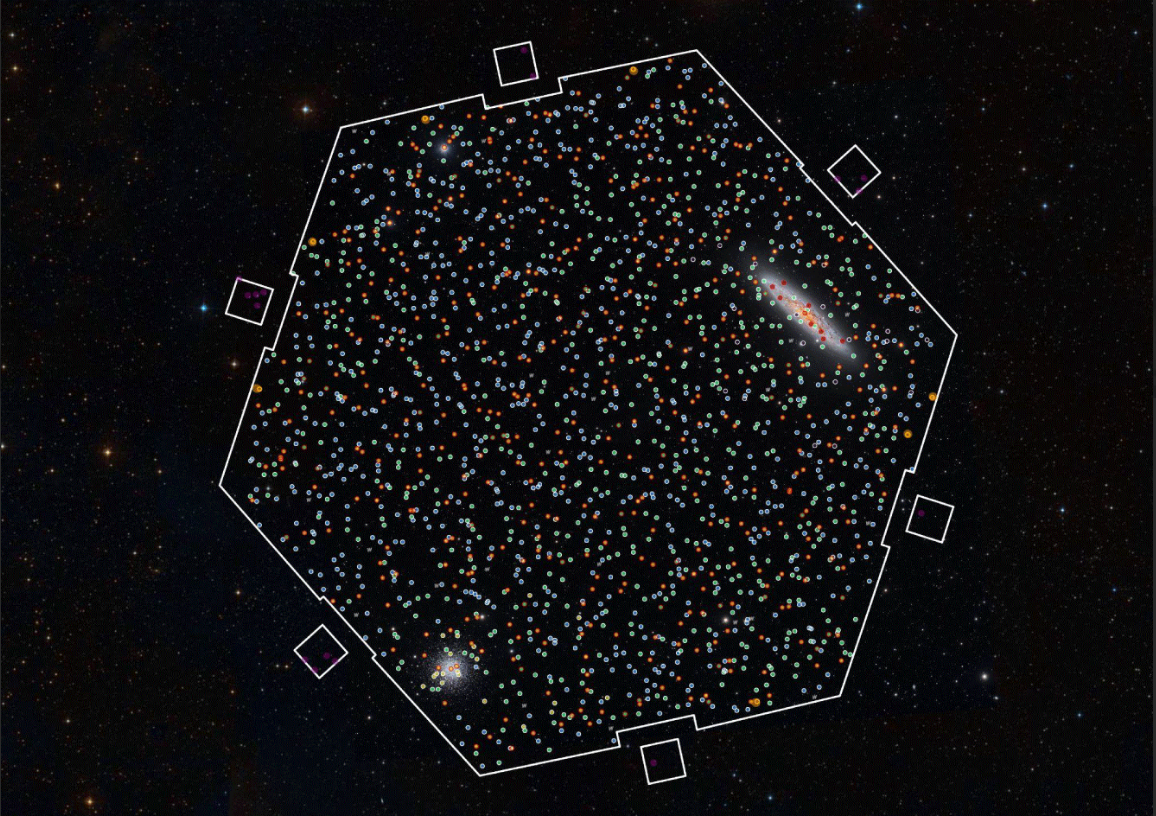 Publicado el: 29/10/2025Chile celebrates the first light of 4MOST: two major projects involving CATA astronomers begin to explore the Universe
Publicado el: 29/10/2025Chile celebrates the first light of 4MOST: two major projects involving CATA astronomers begin to explore the Universe -
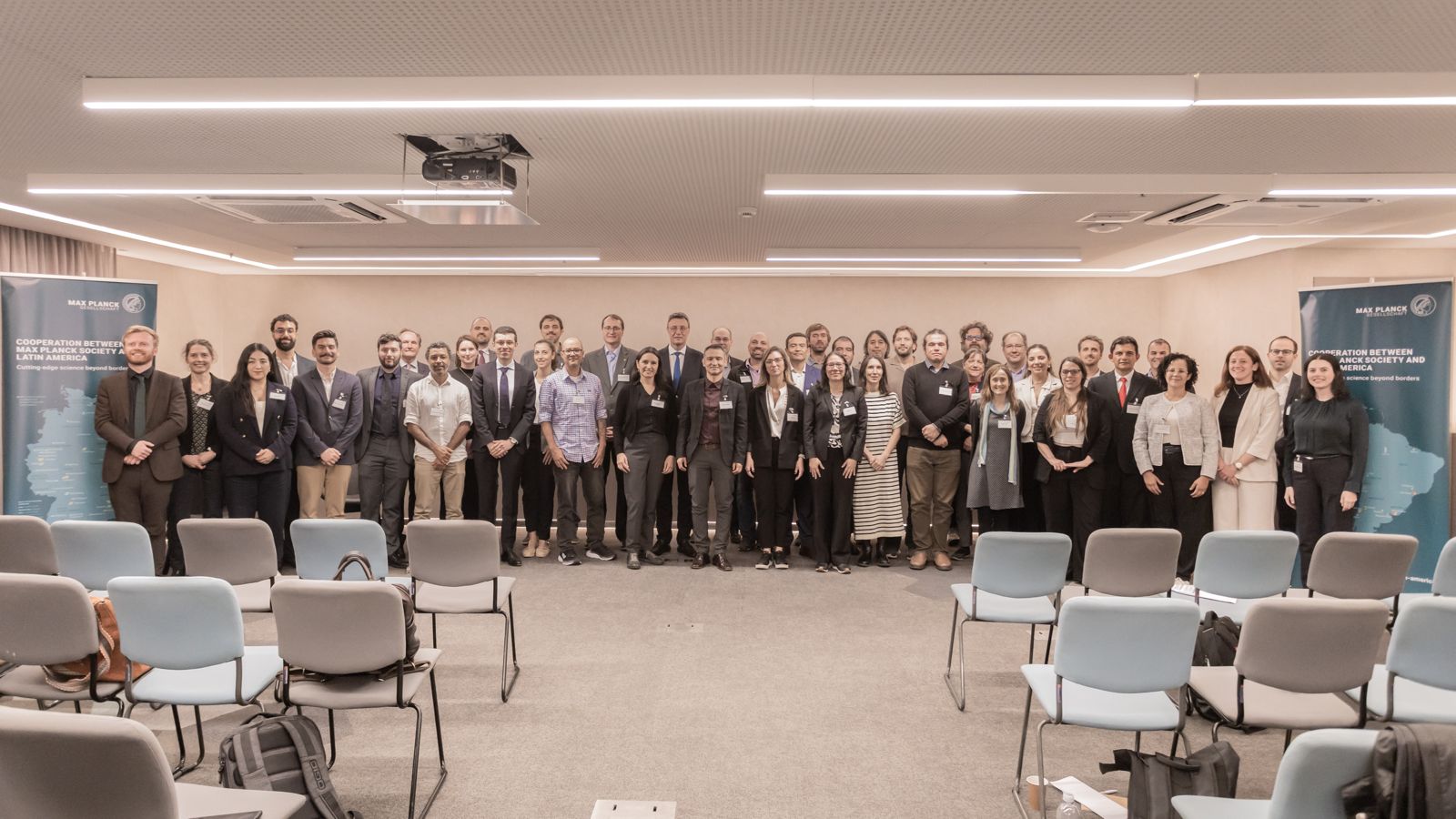 Publicado el: 24/10/2025CATA researcher participated in Max Planck regional meeting in Brazil
Publicado el: 24/10/2025CATA researcher participated in Max Planck regional meeting in Brazil
Categories list
- Acknowledgments 21
- Astrobiology 6
- AstroCluster 1
- Black holes 18
- Corporativo 57
- Cosmology 5
- Descubrimientos 22
- Disclosure 71
- Exoplanets 13
- Extension 4
- Galaxies 21
- Galaxies formation 5
- Inter y Transdisciplina 4
- Local Universe 16
- Publications 6
- Sin categorizar 34
- Solar System 21
- Stellar formation 8
- Technology 14
- Technology Transfer 16
